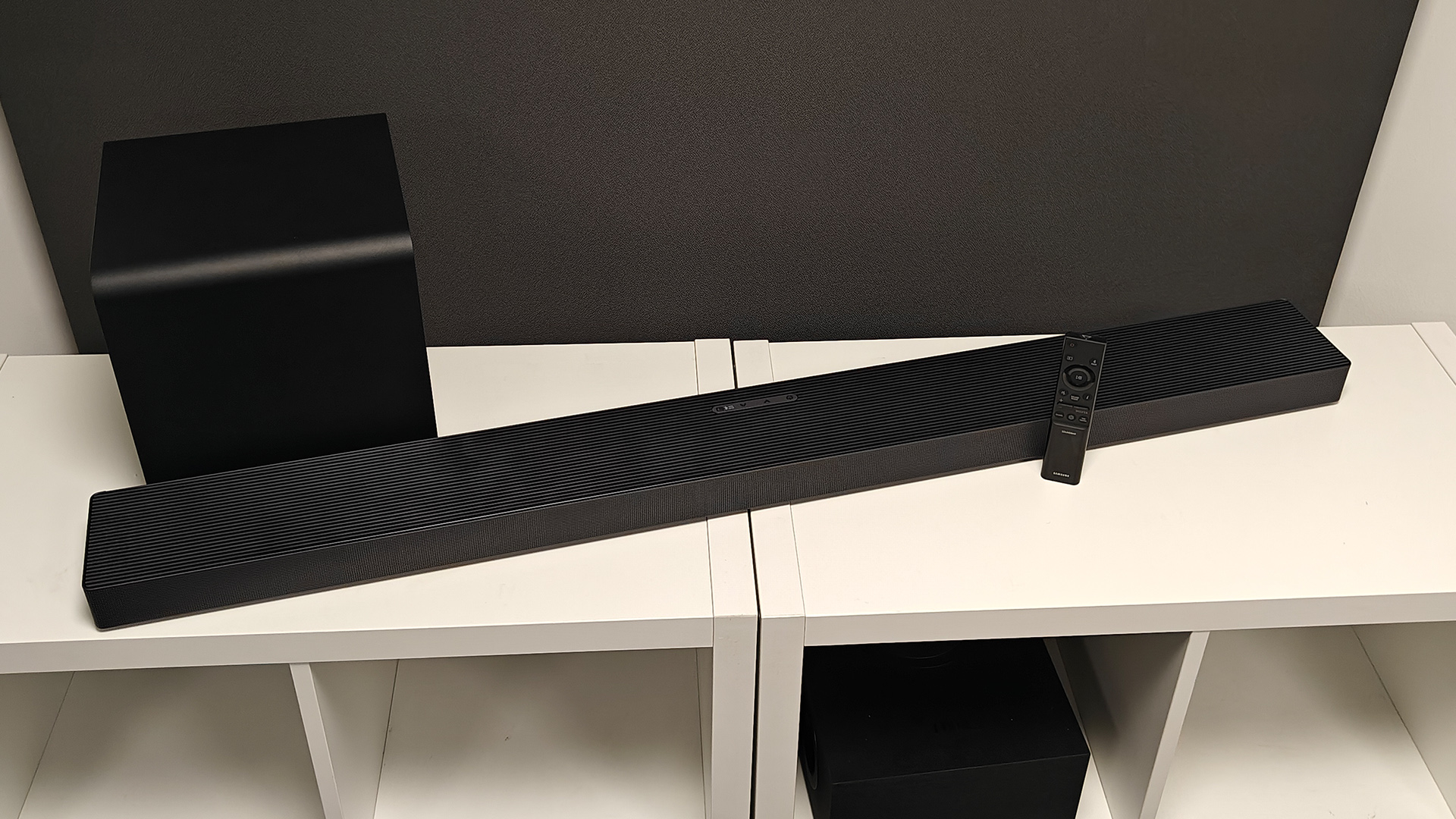What Hi-Fi? Verdict
The U8HQ’s promising spec sheet is undone by a number of flaws, most notably poor backlighting
Pros
- +
HDR pictures are impressively bright
- +
Unusually flexible HDR and gaming support
- +
Decent sound for the money
Cons
- -
IPS panel causes significant backlight issues
- -
Distracting motion handling flaws
- -
Unhelpful picture presets
Why you can trust What Hi-Fi?
The Hisense 65U8HQ’s straightforward but potent star attraction is that for a distinctly mid-range price it gives you an ultra-bright 65-inch 4K picture powered by the sort of Mini LED lighting system usually only found on much more expensive TVs.
It backs this up, too, with impressively versatile HDR support, all the latest gaming features, and an unusually strong audio system that includes both a forward-facing ‘sound bar’ attached to its bottom edge, and a large woofer facing out of its rear. So should the more established names of the high-end TV world be quaking in their boots?
Price
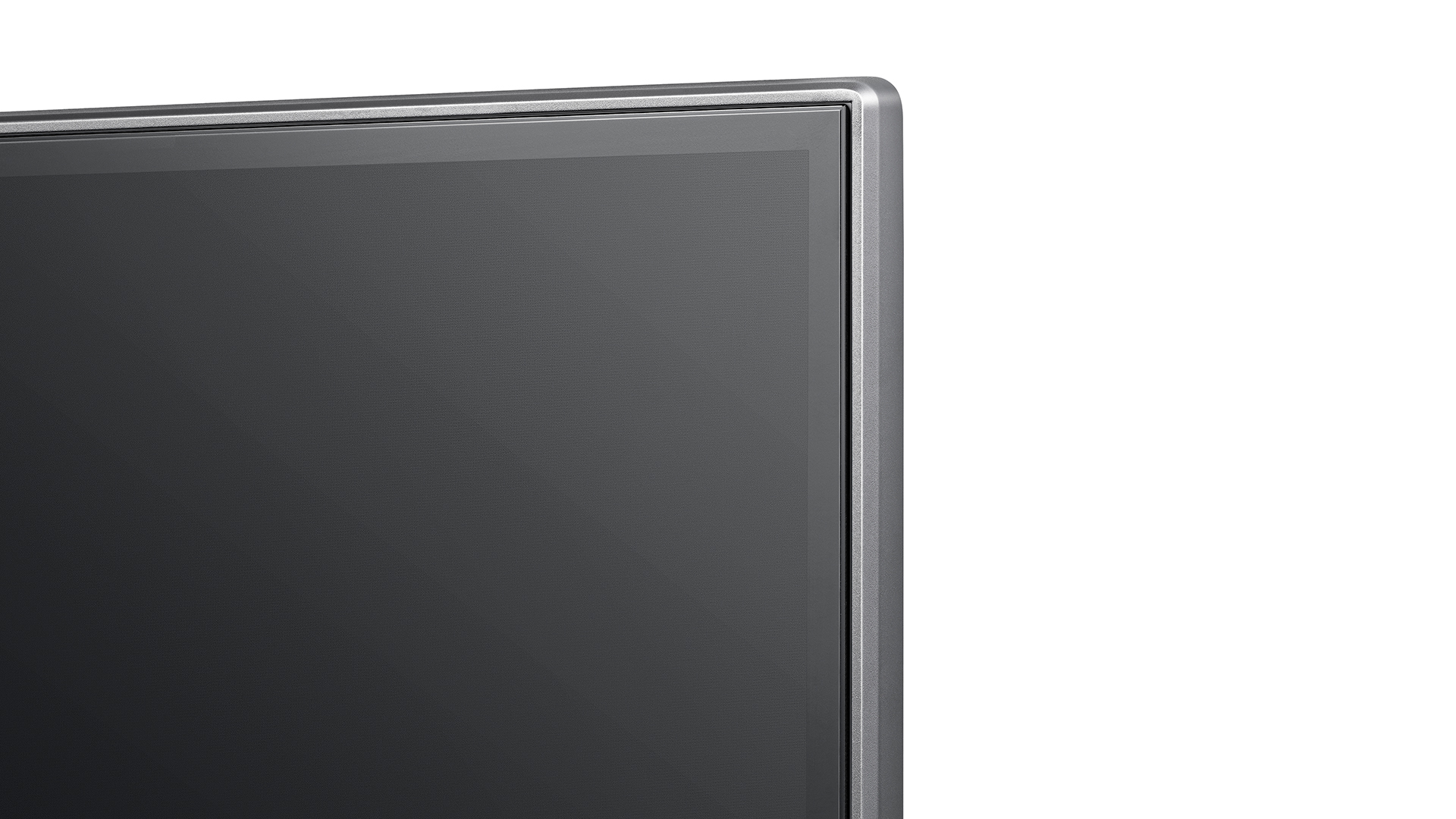
Things get a bit complicated here, at least regarding the global situation. At first glance, everything seems straightforward enough. There’s a UK price set at £1199 (significantly lower than the set’s initial launch price), a US price set at $1399, and an Australian price set at $2799. However, delving into the spec sheets of the slightly differently named models (the UK gets the U8HQ, the US gets the U8H and Australia gets the U8HA) it seems that the TVs are not identically specified across each territory.
Their designs differ considerably, and more importantly, it also appears that they don’t get the same core panels or local dimming controls. The US model, for instance, seems to use a VA panel and more than 500 dimming zones, while the UK model uses an IPS panel and 160 dimming zones. The audio systems are different between territories, too.
It’s fair to describe the pricing in each territory as very competitive for a Mini LED TV, putting it in the same price bracket as many mid-range regular LED TVs. This makes it a potential game changer for Hisense in terms of the sort of consumers it might be able to reach. However, given the potentially quite fundamental specification differences between territories, you shouldn’t consider this review of the UK model as representative of the performance and features of the U8H models in the US and Australia.
Design
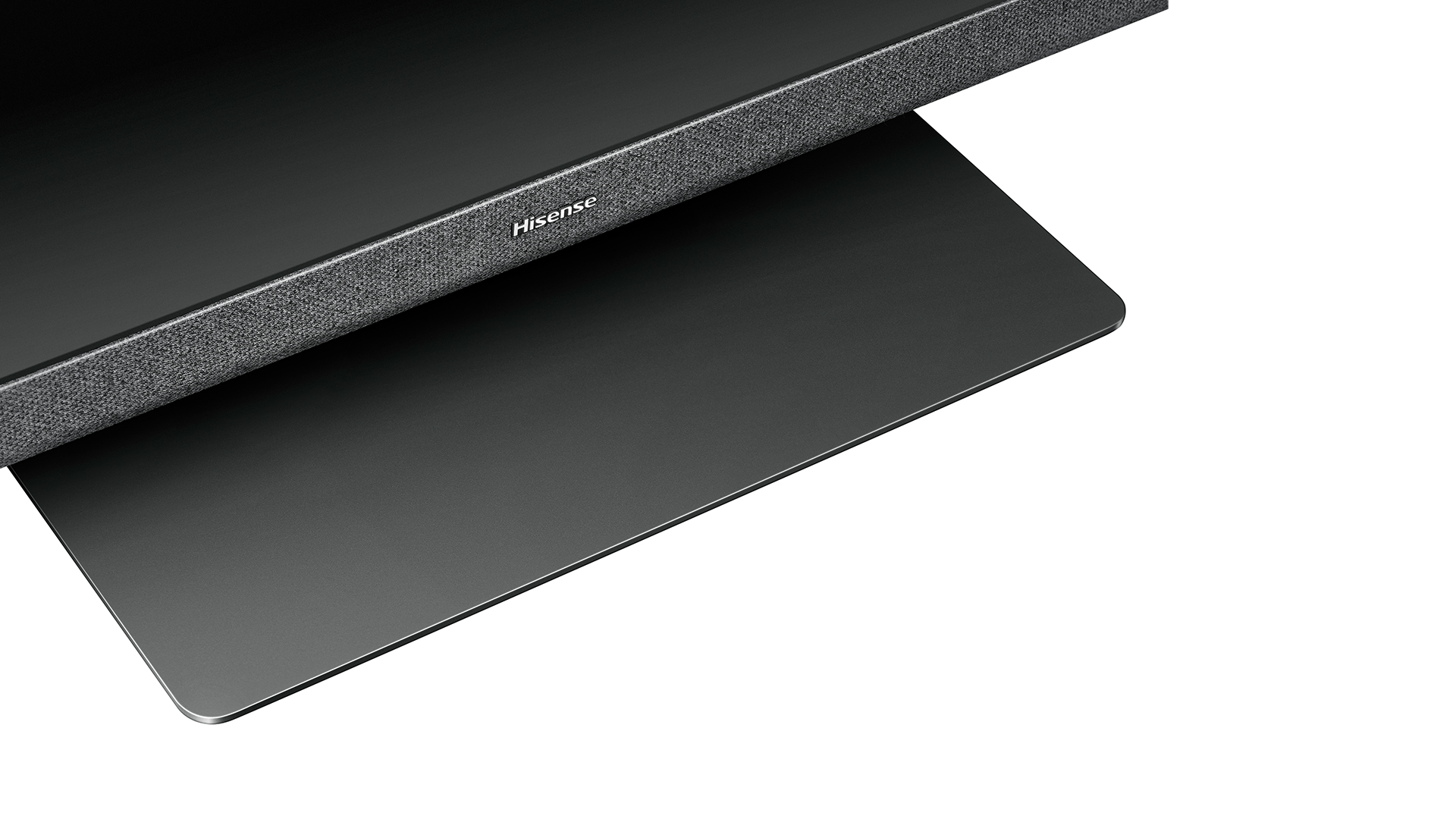
The Hisense 65U8HQ looks more like a mid-range TV than a truly premium one. It’s much more robustly built than Hisense’s more affordable sets, but sports both a fairly chubby profile and a rather ‘meh’ grey frame and desktop stand.
This stand does at least sit in the middle of the TV’s bottom edge, though, so you can place it on a narrow bit of furniture, and the design is enhanced by a promising, cloth-covered speaker section attached to the TV’s bottom edge. Plus we won’t mind the rear-end depth at all if it turns out to be the price we have to pay for a good quality Mini LED direct backlighting system.
The latest hi-fi, home cinema and tech news, reviews, buying advice and deals, direct to your inbox.
The 65U8HQ ships with a single remote control that’s a little more premium in its build than Hisense’s regular efforts, but still throws a gazillion buttons at you rather than adopting a more stripped back approach like the ‘smart’ remotes you now get from some TV brands.
This high button count does at least include direct access to an unprecedented number of streaming apps, though, including Disney+, YouTube, Prime Video, Rakuten TV, Plex, Netflix, Freeview Play and Deezer.
Features
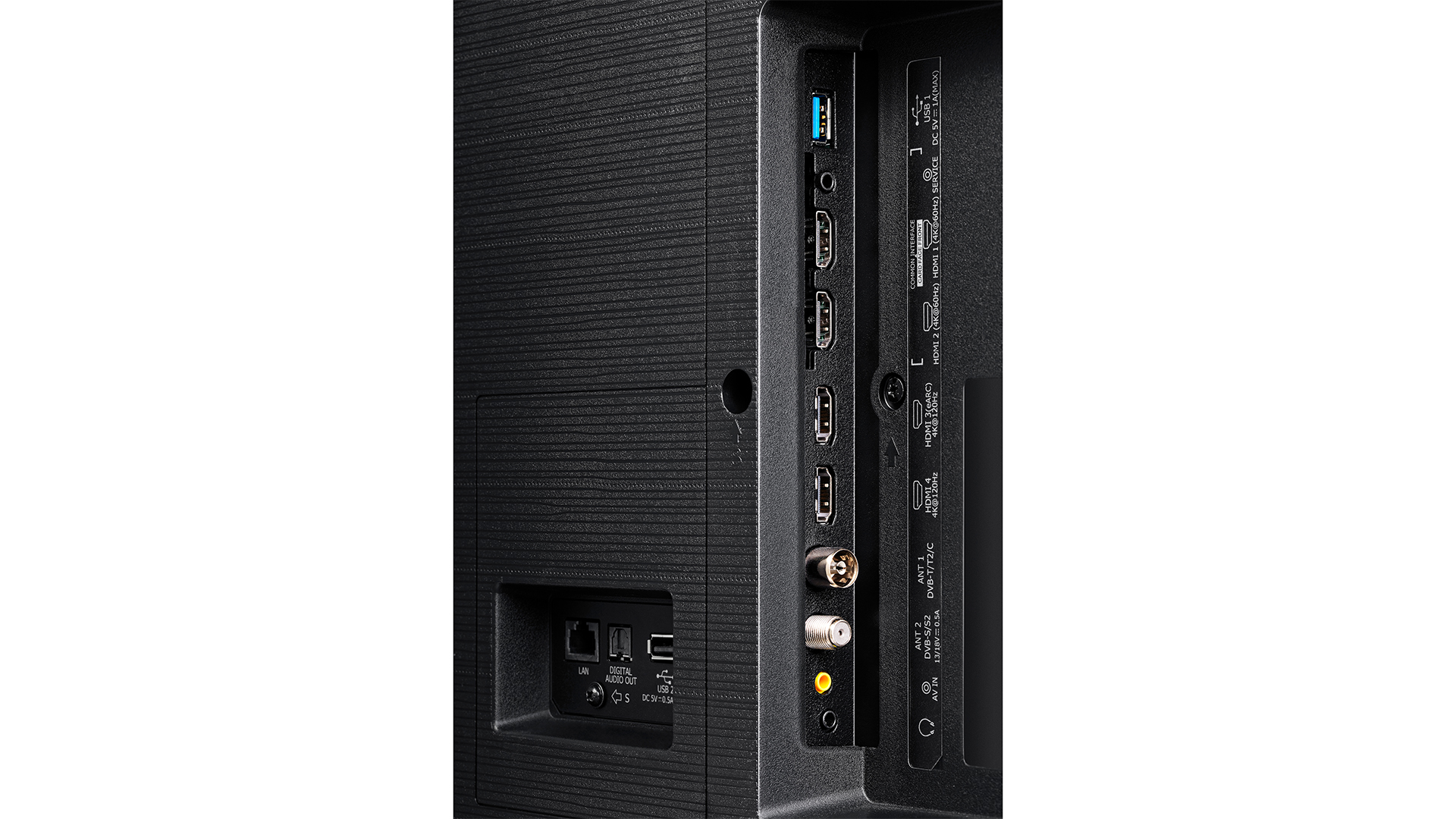
The 65U8HQ is the flagship 65-inch TV from Hisense’s 2022 LCD range. A status it earns, chiefly, thanks to its use of a Mini LED light engine.
This finds the screen illuminated by greater numbers of much smaller LEDs than you get in normal LED backlit TVs, raising the prospect of more localised light control and enhanced brightness. It builds on the contrast potential of Mini LED lighting with a local dimming system, too, where different areas of the LEDs can receive different amounts of light for any given image frame.
We should say right away, though, that the 65U8HQ also potentially undermines some of the Mini LED/local dimming picture quality promise by a) only supporting 160 separate dimming zones and b) using an IPS type of LCD panel. Some rival Mini LED TVs carry 500 local dimming zones and more (though many regular LED TVs carry far fewer dimming zones than 160), while IPS panels tend to struggle more with contrast than the alternative VA panel type.
The 65U8HQ’s connectivity is strong. In particular, two of its four HDMI ports are capable of handling the 4K at 120Hz video signals now supplied by the latest games consoles and premium PC gaming cards. This same HDMI duo can handle VRR gaming too, and support the ALLM switching system whereby the TV can automatically detect whether a console or PC is outputting a video or gaming source and switch in and out of its Gaming mode accordingly.
In Game mode the 65U8HQ achieves an impressively low 16.5ms with 1080p/60Hz sources, which pretty much halves in 120Hz mode. The HDMIs also support eARC, meaning it can pass through lossless Dolby Atmos sound to compatible soundbars and av receivers.
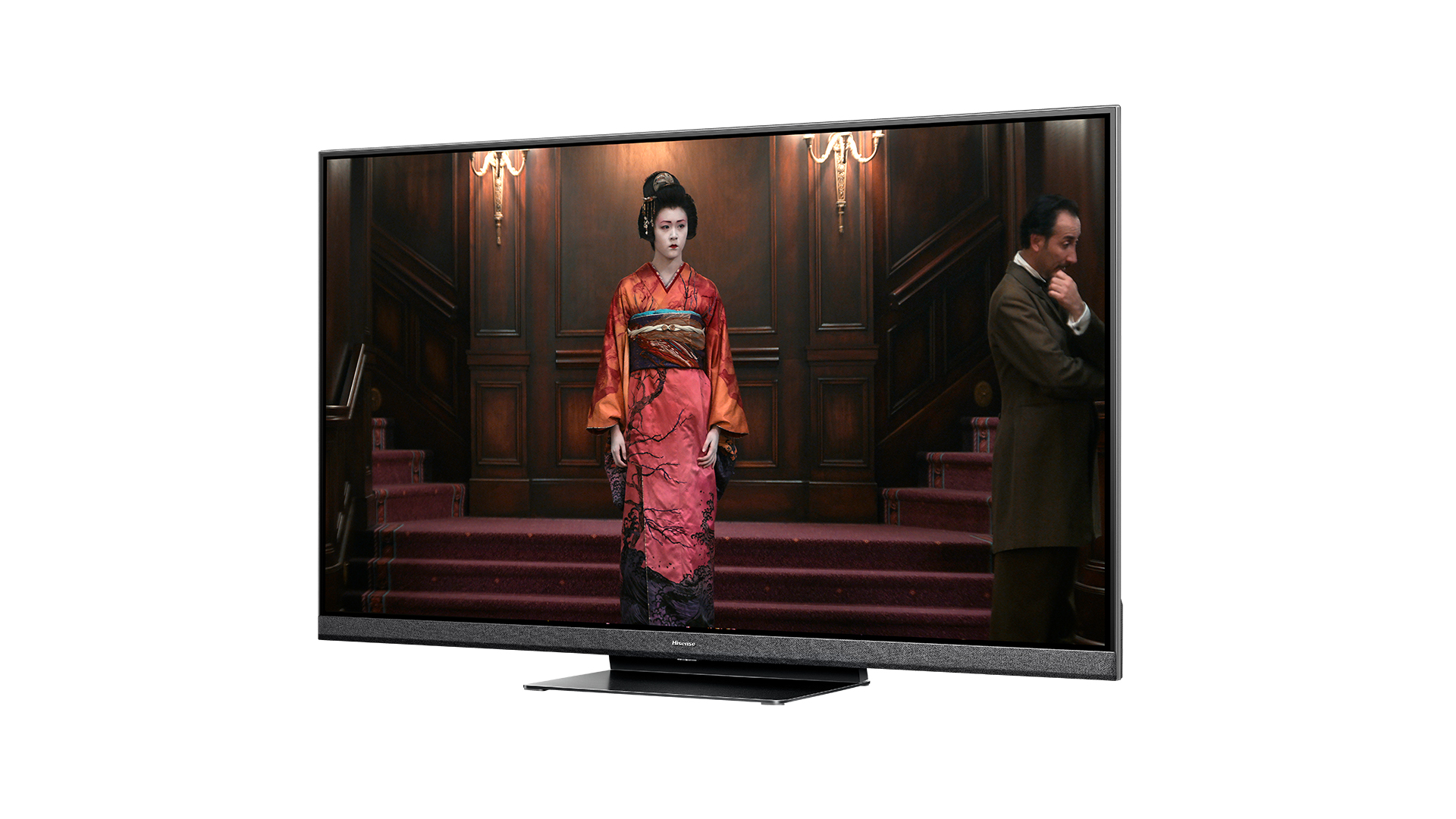
Screen size 65 inches (also available in 55in, 75in)
Type LCD with Mini LED backlight
Resolution 4K
HDR formats HLG, HDR10, HDR10+, Dolby Vision
Operating system VIDAA 6.0
HDMI inputs x4, (x2 HDMI 2.1)
Gaming features 4K/120, VRR, ALLM
Input lag 16.5ms
ARC/eARC eARC
Optical output? Yes
Dimensions (hwd, without stand) 86 x 145 x 7.8cm
The HDMIs’ flexibility also impresses when it comes to HDR support, as they prove capable of handling both the Dolby Vision and HDR10+ ‘premium’ HDR formats on top of the HDR10 and HLG stalwarts. Many premium TVs only support Dolby Vision or HDR10+ , not both, yet it’s only if a TV has both that you can be sure you’re always getting the best potential quality from any source you play into it.
The 65U8HQ even combines its HDR support with a built-in light sensor to deliver the HDR10+ Adaptive and Dolby Vision IQ systems, whereby the TV can adjust the way HDR is presented based on a continual assessment of room light conditions.
The 65U8HQ uses Quantum Dots to make its colours rather than typical LED filters, opening the door to an expanded colour gamut to go with its high Mini LED-inspired brightness, while pictures have the potential to be enhanced by Hisense’s new Hi-View processing engine, tendrils of which extend into multiple image areas.
Promising pointers towards the 65U8HQ’s quality come from its carriage of both the IMAX Enhanced endorsement and a Filmmaker mode. These mean that IMAX and the Ultra HD Forum have both deemed the set worthy of receiving their respective endorsements and modes, with Filmmaker Mode also hopefully offering a shortcut for movie enthusiasts looking for a big screen home cinema TV that can deliver accurate pictures on the cheap.
The last 65U8HQ feature of note is its Vidaa 6.0 smart system. Vidaa is Hisense’s own smart platform, and in recent times it’s become really quite effective. It’s easy to use, it runs decently slickly and stably, and it now carries an impressive roster of streaming apps. All of the big hitters – Netflix, Disney+, Prime Video, Apple TV, Freeview Play, YouTube etc – are present and correct, as are multiple voice control systems.
As mentioned in the design section, the 65U8HQ carries a forward facing speaker bar along its bottom edge, and a large rear-facing woofer on its rear. In fact, its speaker system delivers a 2.1.2 channel count, promising a bit more spatial effectiveness with its built-in Dolby Atmos sound playback than you might normally expect with such an affordable mini LED TV.
Picture
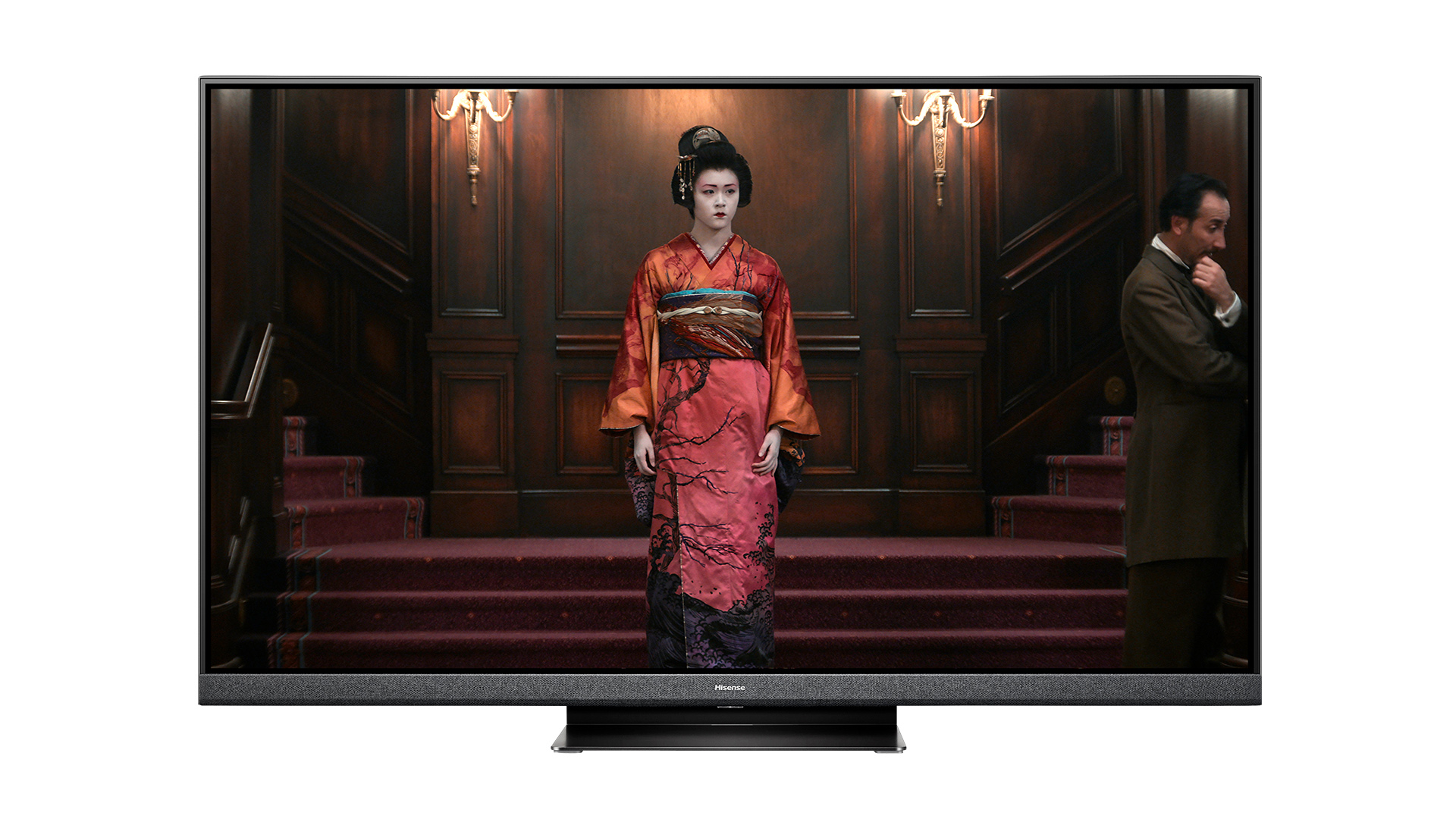
As feared, Hisense’s decision to use an IPS type of panel inside the 65U8HQ prevents it from achieving the high-value hero status it might otherwise have attained.
From the first moments watching any dark high dynamic range content it’s pretty clear that even Mini LED lighting and 160 local dimming zones aren’t enough to stop the TV suffering with significant backlight clouding wherever a bright object appears against a dark backdrop. This clouding is noticeable for both how light it is against the darkest black levels the screen is capable of, and for how far it spreads around the bright object.
This leads to many dark scenes taking on a cloudy, soft appearance that isn’t helped by the fact that the clouding extends distractingly into the black bars above and below wide aspect ratio films.
You can also sometimes see the clouding moving around as bright objects that cause it change position in a picture, and you can sometimes see it popping in and out of parts of very dark shots as the backlight control system struggles to deal with slight shifts in local brightness levels. And every time you see the mechanics of the backlight system so obviously going through their motions, you end up being distracted from the TV show or film you’re watching.
You can take steps to moderate the clouding. Leaving the room lights on while viewing the 65U8HQ hides the backlight issues to some extent. Turning off the TV’s Adaptive Contrast feature makes the blooming less aggressive too – but doing this also sacrifices image vibrancy, contrast and shadow detail.
Oddly the 65U8HQ’s troublesome IPS panel doesn’t seem to give us as much of a viewing angle benefit as might be expected. Colours perhaps hold up better from an angle than they might on a regular VA panel, but contrast falls away – not least because the clouding problem becomes significantly worse.
The good news is that with bright content the 65U8HQ is pretty much a different TV. Here, for instance, you get to really enjoy the set’s formidable brightness, which is up there with the best LCD TVs we’ve seen from the likes of Sony and Samsung. All this brightness helps its pictures hold up nicely against the sort of fairly bright room conditions most of us most often watch TV in.
The 65U8HQ’s colours can look great from time to time, too. Especially with Dolby Vision sources, the extra scene by scene metadata seemingly helps to bring the best out of the 65U8HQ’s Quantum Dot system, delivering a winning mix for the set’s money of tonal balance and vibrancy. While some bright content holds up well outside the Dolby Vision world, though, some tones can look a touch flat without the Dolby Vision ‘help’, while relatively warm presets such as the Filmmaker Mode can look a touch jaundiced.
If you turn its over-eager, softness-inducing noise reduction systems off, meanwhile, the 65U8HQ is capable of delivering a reasonably sharp and detailed 4K image experience. There are certainly sharper looking 4K TVs out there, especially when it comes to upscaled HD sources, but the 65U8HQ’s level of sharpness is certainly a step beyond HD and generally yields quite natural rather than gritty or forced results.
While the 65U8HQ’s combination of impressive brightness, vivid if inconsistent colours and pleasing sharpness ensure that Hisense’s UK Mini LED debut has more than a few good moments, we do have to finish with one more niggle – its motion handling. Most of the motion processing settings generate some of the weirdest-looking movement we’ve seen with 24fps films, as at times – especially for a moment directly after cuts – the image can stutter and judder like old celluloid running through a projector that’s about to break down.
The Film motion setting is the only one that makes this problem subtle enough with movies to be watchable, but even this setting isn’t completely devoid of awkward-looking moments.
Sound
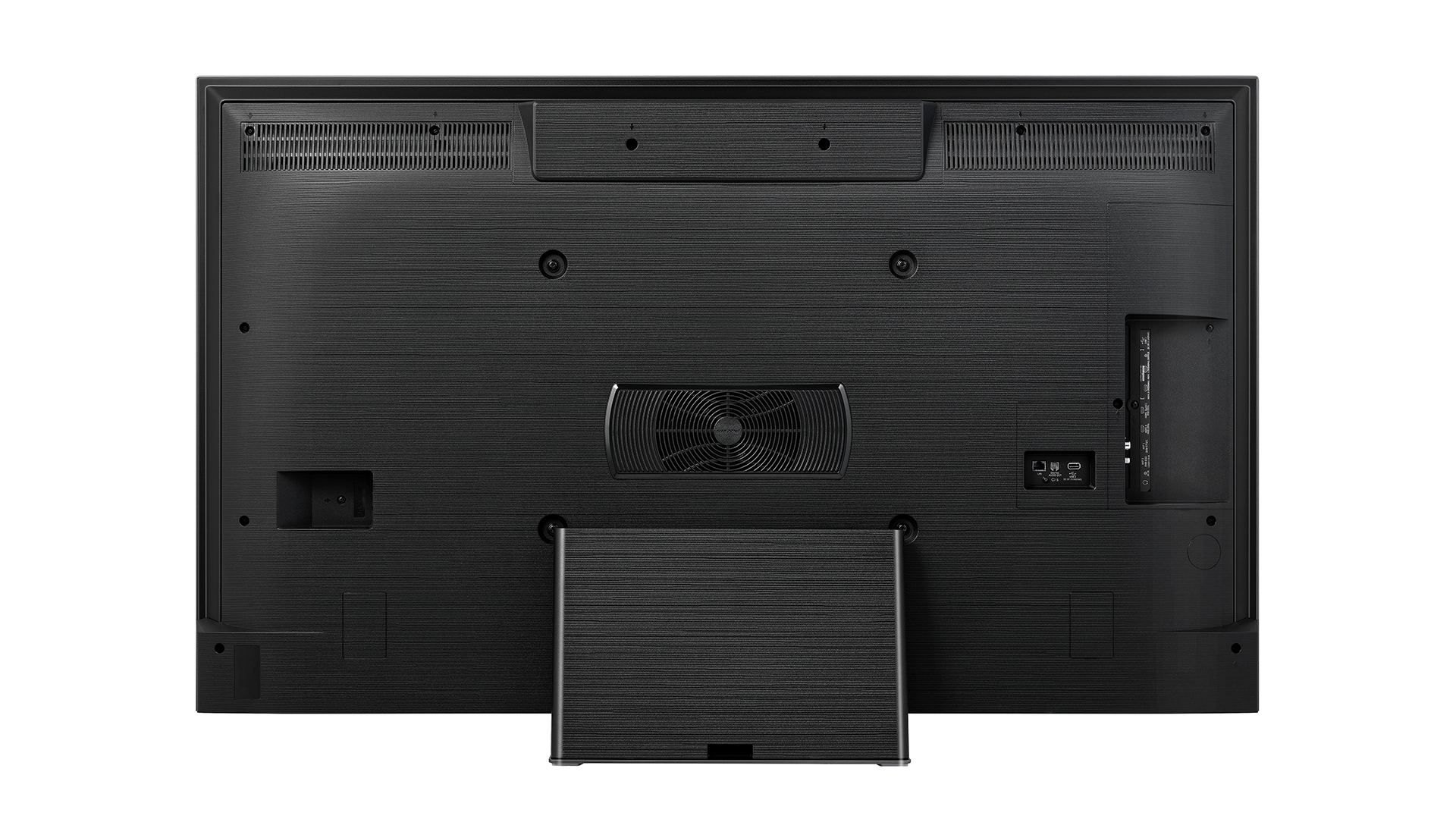
The Hisense 65U8HQ’s audio is consistently stronger than its pictures. Especially, actually, if you don’t run it in Dolby Atmos mode.
With Atmos turned off the set delivers impressive levels of volume, and the front-facing nature of the main speakers helps the sound enjoy good impact and directness, while also spreading the sound a good distance left and right as well as forwards. There’s plenty of detail in the presentation too, and the mid-range is dynamic and open-sounding enough to cope well when the sound swells for a good action scene.
Dialogue is clean and sounds like it’s coming from the on-screen action rather than the speaker below the screen, and finally that large woofer on the 65U8HQ’s rear underpins the action with healthy amounts of reasonably deep and well-sustained bass.
Activating the TV’s Dolby Atmos decoder oddly causes the sound to shrink in on itself and lose energy and projection – almost the polar opposite of what we would expect/want to happen. Even more strangely, in Dolby Atmos mode audio suddenly sounds like it’s coming predominantly from behind the screen, despite the set using forward facing speakers.
In short, if you end up with a 65U8HQ, counter-intuitive though it sounds, we’d suggest that you leave the Atmos mode turned off.
Verdict
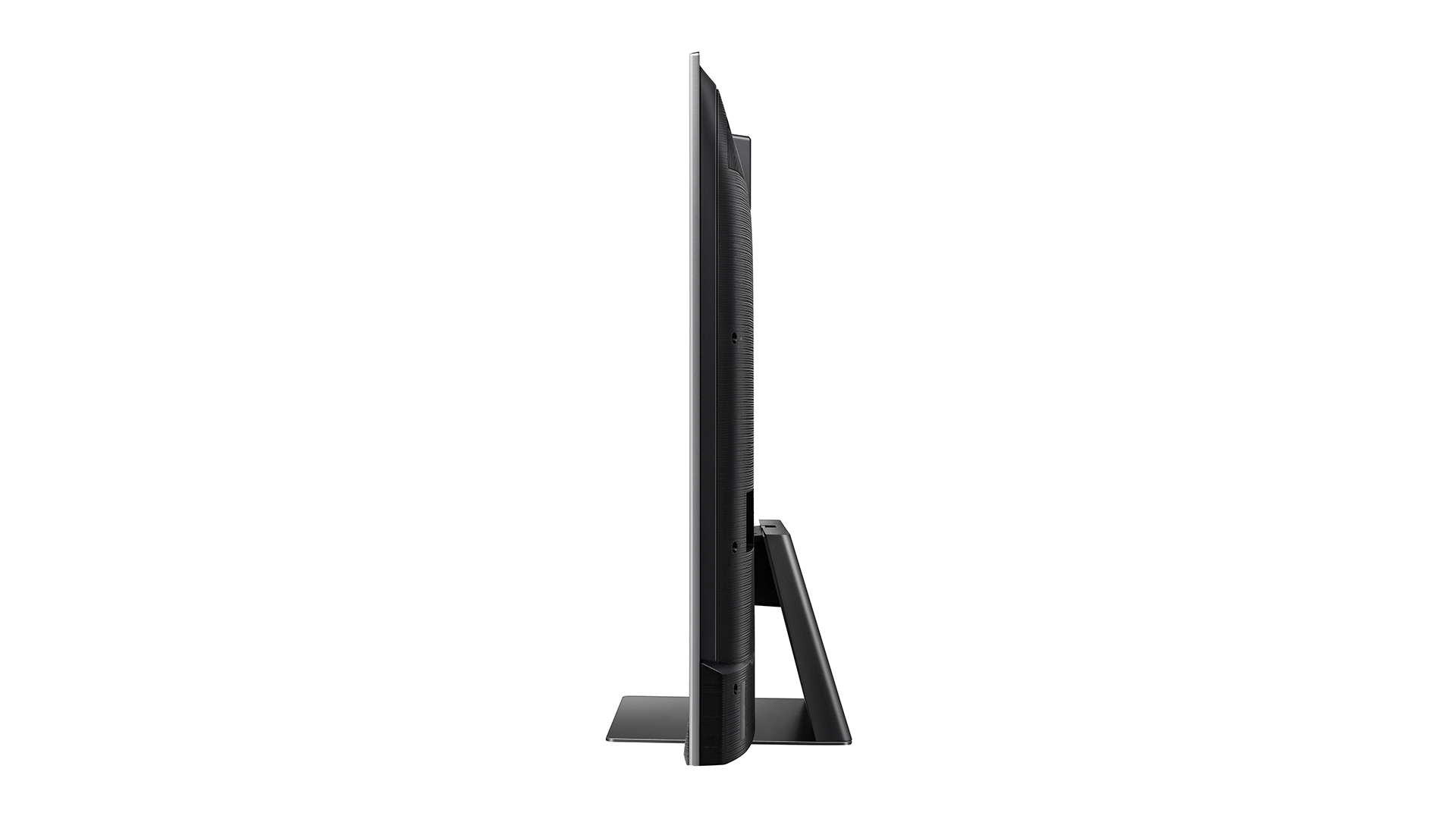
The 65U8HQ has enough premium tools at its disposal to potentially fit in perfectly with a much higher echelon of TV than we’re accustomed to seeing from Hisense. It sounds good outside of its Dolby Atmos mode, and there are times – in light rooms with uniformly punchy HDR content – where the TV’s brightness and Quantum Dot colours really deliver the goods.
In the end, though, the set’s backlight clouding and motion problems unfortunately add up to a flaw too far.
SCORES
- Picture 3
- Sound 4
- Features 4
MORE:
Read our Samsung QE65QN95B review
Also consider the LG OLED65C2
And the Philips 65OLED806
Our pick of the best TVs: brilliant budget to premium 4K Ultra HD TVs
What Hi-Fi?, founded in 1976, is the world's leading independent guide to buying and owning hi-fi and home entertainment products. Our comprehensive tests help you buy the very best for your money, with our advice sections giving you step-by-step information on how to get even more from your music and movies. Everything is tested by our dedicated team of in-house reviewers in our custom-built test rooms in London, Reading and Bath. Our coveted five-star rating and Awards are recognised all over the world as the ultimate seal of approval, so you can buy with absolute confidence.

